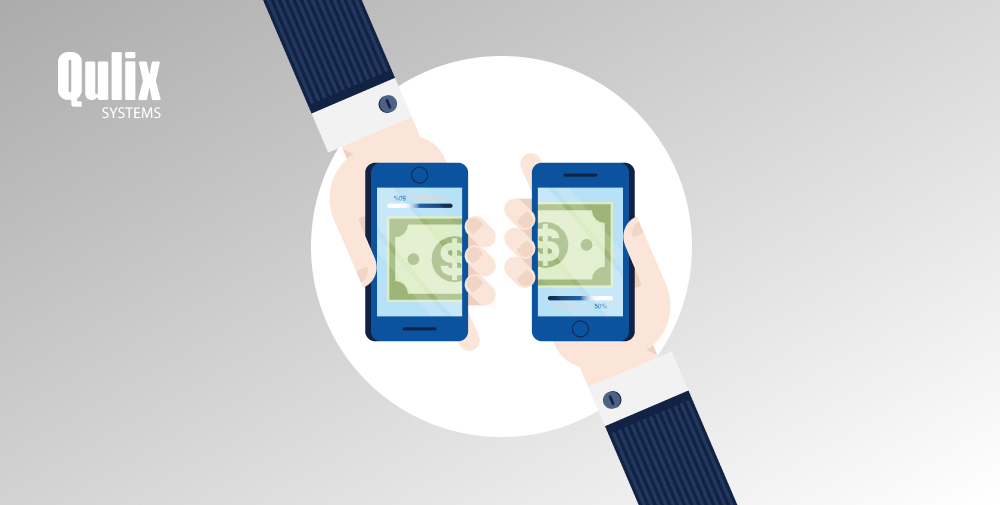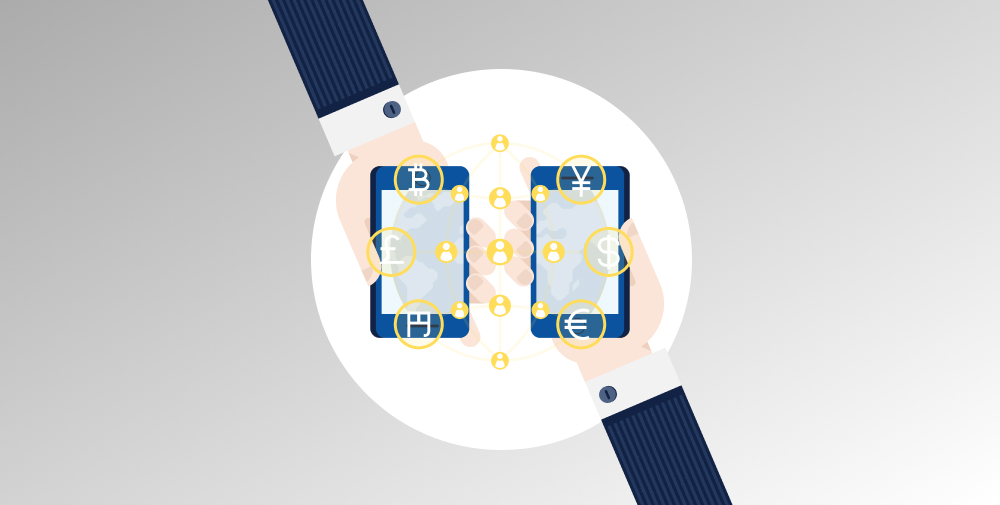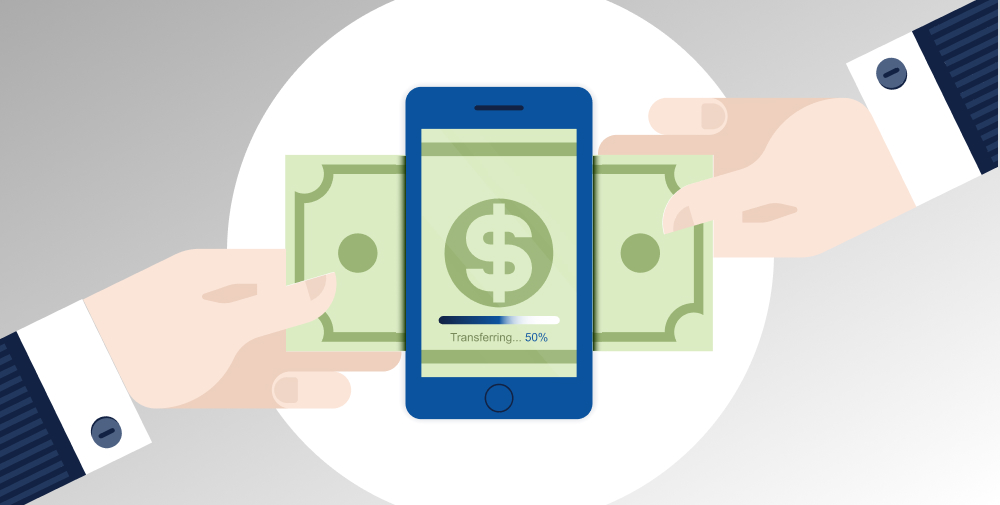Mind-blowing statistics confirm that today’s mobile users are big fans of peer-to-peer payment apps (P2P) designed to speed up and optimize our everyday financial routine (money transfer, service payment, purchases, etc.). That is the reason why many businesses are trying to launch their own P2P payment solutions, but very often they have no idea how to build a P2P payment app or what resources they need, or what challenges they are most likely to face. This article will give some useful insights for everyone looking for answers.
written by:
Anastasia Borodinets
Mind-blowing statistics confirm that today’s mobile users are big fans of peer-to-peer payment apps (P2P) designed to speed up and optimize our everyday financial routine (money transfer, service payment, purchases, etc.). That is the reason why many businesses are trying to launch their own P2P payment solutions, but very often they have no idea how to build a P2P payment app or what resources they need, or what challenges they are most likely to face. This article will give some useful insights for everyone looking for answers.
The adoption of peer-to-peer payment apps is growing worldwide. So it comes as no surprise that by 2023 the total number of people using digital payments is expected to jump to 1.6 billion worldwide.
If you’re planning to have your own solution like PayPal soon to catch the wave, it’s time to begin to study the topic. What is peer-to-peer money transfer exactly and why is the demand for this technology so high?
What Are Peer-to-Peer (P2P) Payments?
P2P payments are a type of digital transaction that allows for a secure money transfer between two people via a mobile app (P2P payment app) that is linked to your bank account.
P2P mobile apps are more welcomed by millennials, as they demonstrate more trust in sharing their financial data with third-party applications than older generations do.
Well, now we know what a P2P payment app is, let’s study which types of P2P payment apps you can find on the market.
Categories of P2P Payment Apps
Standalone Apps (PayPal, Venmo, Square): This type of P2P payment app has an eWallet feature that allows users to either store or send their money. It is worth mentioning that such models have no bank support.
Bank-Centric Apps (Dwolla, Zelle): Nowadays almost all banks create their own mobile payment apps or devices that work with a particular POS (Point-of-Sale). Such P2P payment apps enable each user to withdraw or deposit money directly from her/his bank account.
This type of P2P payment apps can further be divided into two categories: the first one is a bank’s own mobile app, while the second category is a P2P payment app, which transfers money via the bank’s credit unions and partner banks.
Social Media or Messaging-Based Apps (Square Cash, Snapchat): Social media apps assist us in sending/receiving money directly from the messenger. These peer-to-peer payment apps do not require strict authentication to initiate a transaction since transactions are usually performed among regular contacts.
Now when the essence of the peer-to-peer payment app is clear to you, it is high time to dig deeper by studying the main steps of the P2P payment app development strategy.
How to Create a Peer-to-Peer Payment App: a Complete Guide
Step #1 Study the market with a BA
You can do this preliminary work on your own. However, we recommend hiring an experienced business analyst to make sure that their business risks are minimal. A good BA will help you avoid reinventing the wheel or creating an irrelevant product, which will be just a waste of time and resources (for more values that a BA can bring to your project, study this article).
Step#2 Determine your business model
Next, you’d better define your business model, which includes an app development platform, a target location, functionalities, a tech stack, a revenue structure, etc. Think through every detail to ensure a smooth and seamless P2P payment app development process. In our article, we have also placed the features that the best P2P payment apps should include (see below) which you are welcome to use to enrich your business model.
Step#3 Proceed with budget planning
Contact several custom software development companies to find out the approximate cost of creating your P2P payment app. Keep in mind that the cost of development is not the final figure you will have to pay: further support and app maintenance costs are a mandatory expense item for all owners of P2P payments apps, and these costs are going to increase as long as your app is evolving.
Step#4 Hire an experienced development team
Since the fintech sector is extremely vulnerable to cyber-attacks today, hire technical experts in cybersecurity. Don’t be confused by the cost of developing a secure P2P payment solution – it can’t be low. Apart from an attractive UI design, P2P payment app development requires a strong architecture and healthy code. It is the tech part of the app that requires impressive investments because the team needs deep domain expertise and proven experience in complex systems. Such experience takes years to gain and is never sold at a rock-bottom price.
Must-Have Features for Peer-to-Peer Payment Applications
We will skip such obvious features like money transfers/payments/currency exchange and focus on those features that will distinguish your app from the competitors.
1. Push Notifications
Notifications keep users aware of every wallet activity. Nowadays unlawful (primarily financial) data usage is among the top crimes, so app developers must enable timely and accurate notifications of any payment done or received, payment requests, unauthorized login attempts, etc.
Due dates, loyalty points, or ticket bookings are among many other details that can be sent through push notifications. Besides, push notifications are useful when you need to send some critical alerts like changes in your internal policies, or scheduled improvements.2.Transaction History
This feature enables users to see all their transactions done via a mobile app on a weekly, monthly, and yearly basis. It is a total must for any P2P payment app. A transparent transaction process will help your users make sure that the app is really safe to use.
2. Unique Identification or OTP
When a user selects your P2P payment app, he/she entrusts you with their financial assets. Do not neglect your audience’s trust; make your app security even tighter by enabling unique identification or OTP (one-time-password).
3. Fingerprint Security Lock
For even stronger security, you can also add the fingerprint lock feature in addition to the OTP authentication. This will give more guarantees that only the rightful user of the app is in charge of the app activity.
4. Buy/Sell Cryptocurrency
The rising popularity of cryptocurrencies can work for your benefit, too. By including the buy/sell cryptocurrency feature in your app, you automatically attract people who are not indifferent to Bitcoin, Ethereum, and other cryptocurrencies.
5. Chatbots
A virtual assistant operating 24/7 will surely help you win the hearts of your users. Chatbots can address a series of problems like payment failure, wrong deductions from an account/wallet, app malfunctioning when a call-center is unavailable, etc., which improves total user satisfaction.
Now that you have an idea of how to create a peer-to-peer payment app, it’s time to know what are the main challenges of the process.
Major Challenges Faced by Owners of P2P Payments
Data Security and Regulatory Compliance
Sensitive data security is a pain in the neck for all owners of fintech solutions. Thousands of hackers and phishers look for any opportunity to steal user confidential and sensitive data. Even such giants like PayPal and NIC Asia Bank experienced successful hacker attacks which led to financial and personal data leakage. Such accidents led to the development of an extended family of laws and regulations to safeguard user data.
Among those were PCI DSS regulatory standards established by such major companies as Mastercard VISA, American Express, and many others. To comply with PCI DSS, your product should meet the below criteria:
- Protected confidential client data
- Strong access controls
- Updated IT security policies
- Continuous network testing and monitoring
- Vulnerability management system in place
Dispute Settlement Cases
You should be ready to settle many issues related to money transfer. Let’s have a look at a pretty common example.
An app user tries to send a certain sum of money to a person, but the recipient does not receive it, while the money is debited from the sender’s wallet/bank account. Such cases demand an immediate response since by ignoring even a single case like this you risk facing not only a legal responsibility. It is customer outflow that is 100% imminent.
Currency Conversion
Another challenge faced by many owners of peer-to-peer payments apps is currency conversion as nowadays there are more than 180 currencies in the world. With such an impressive number of currencies, real-time conversion becomes quite a difficult process and is not always available in each P2P payment app.
Concluding Lines
A modern user is now more eager than ever to use digital funds instead of physical ones. So, perhaps now is the best time for you to invest your money into the development of a robust P2P payment app and find a reliable method of generating a new stream of revenue.
However, as you could have learned from our article, building a strong P2P payment app is not a piece of cake to do if you take into account all the security issues, regulatory compliance, and an impressive pool of features that your potential users expect from your product. However, if you’re still adamant to build your own P2P payment app, how about one last piece of advice from us?
Finding an experienced vendor to deliver a fault-tolerant, easily scalable, and totally secure app is another challenge that you might need some help with. Qulix Systems is a trusted fintech development company with 20-year experience in turning great ideas of its clients into high-end solutions. We’re strong both in backend and frontend delivery; our architects and developers are great at system integrations. We take charge of all the SDLC steps or join at any stage your team may require.
To find out more about how to implement the idea of your powerful and safe P2P payment app, get in touch with our Support Team.

Contacts
Feel free to get in touch with us! Use this contact form for an ASAP response.
Call us at +44 151 528 8015
E-mail us at request@qulix.com










